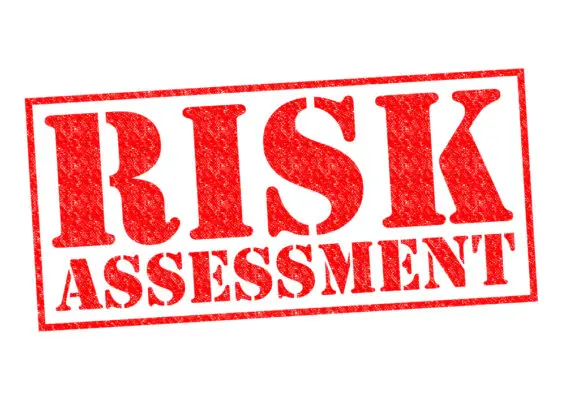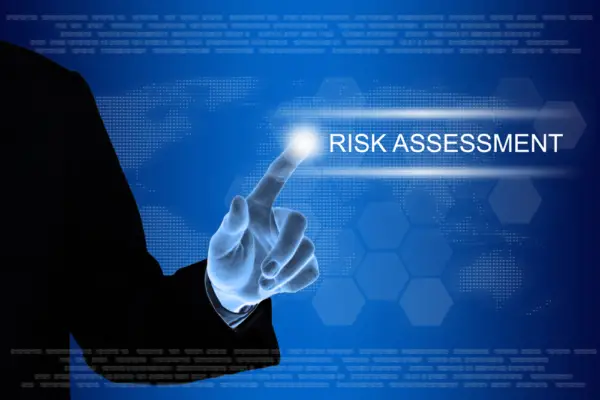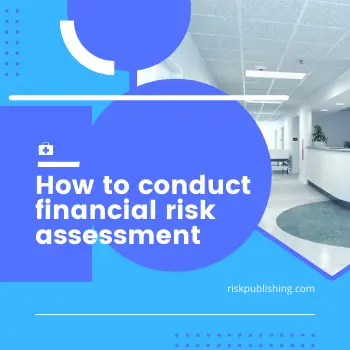Risk assessments are critical in identifying and managing potential hazards that may threaten the safety of individuals, organizations, and communities. Regular risk assessments are essential in ensuring that risks are adequately managed and preventive measures are taken to mitigate potential damage.
However, determining the frequency at which risk assessments should be conducted can be challenging for many organizations.
This article will explore the importance of regular risk assessments in mitigating potential risks. We will also delve into the factors businesses need to consider when determining the frequency of risk assessment.
Additionally, we will provide insights on how businesses can develop an effective risk assessment schedule and implement these assessments within their organization.
Finally, we will discuss how continuous improvement of your risk assessment process can help you manage risks more effectively.

Understanding the Importance of Regular Risk Assessments
Conducting risk assessments regularly has numerous benefits for organizations, including identifying areas where safety protocols may need improvement and reducing the likelihood of accidents or incidents occurring.
Taking a proactive approach to risk management, companies can ensure that their employees can perform their duties in an environment free from unnecessary risks.
On the other hand, neglecting to conduct regular risk assessments can have serious consequences for businesses. Failure to identify potential hazards could result in workplace accidents, injuries, or even fatalities.
In addition, companies that do not take the necessary steps to prevent incidents from occurring may face legal action if an employee is injured due to inadequate safety measures.
Regularly conducting risk assessments helps organizations stay compliant with relevant laws and regulations while providing peace of mind for employers and employees.
Regular risk assessments are essential for creating a safe working environment and protecting against potential hazards. The frequency benefits far outweigh any perceived inconvenience or cost of these evaluations.
Organizations can create an atmosphere where employees feel valued and protected while contributing to overall business success.
Factors to Consider When Determining Risk Assessment Frequency
When considering the frequency of risk assessments, various factors must be considered to determine an appropriate schedule that ensures a comprehensive and accurate evaluation of potential hazards.
While it is essential to conduct regular risk assessments, performing them too often can consume valuable time and resources. Therefore, determining the optimal frequency requires careful consideration of several key factors.
Nature of the Business:
The industry and nature largely determine the risks it might face. For example, a manufacturing company may have more physical risks, while a financial firm may face more financial and compliance risks.
Risk Profile:
A business with a higher risk profile may require more frequent risk assessments. This can include businesses in rapidly changing industries, businesses growing quickly, or businesses engaging in high-risk activities.
Regulatory Requirements:
Some industries are heavily regulated and may require regular risk assessments to ensure compliance with those regulations. In such cases, the regulatory bodies may dictate the frequency of risk assessments.
Previous Incidents:
If a business has had significant issues with risks, it may be necessary to increase the frequency of risk assessments.
Changes in Business:
Major changes in the business, such as mergers, acquisitions, new product launches, or entering new markets, can all introduce new risks that need to be assessed.
Changes in the External Environment:
The external environment can significantly impact the risks a business faces. This can include changes in the political climate, economic conditions, technology, or social trends.
Result of Previous Risk Assessments:
If previous risk assessments have identified significant risks that need to be managed, it may be necessary to increase the frequency of risk assessments to ensure these risks are being effectively managed.
Size of the Business:
Larger businesses generally have more complex operations and may face more potential risks, thus may require more frequent risk assessments.
Firstly, the level of organizational changes should be considered when determining risk assessment frequency. Changes such as new product lines or services, alterations in production processes or equipment, and shifts in personnel can all impact the potential risks an organization faces.
As a result, it may be necessary to conduct more frequent assessments during periods of significant change to identify new hazards and mitigate potential harm.
Secondly, industry standards and regulations should also be considered when deciding on a suitable risk assessment schedule. Some industries are required by law to perform regular safety evaluations; therefore, failing to comply with these mandates can result in legal repercussions for non-compliance.
Furthermore, staying up-to-date with evolving regulatory requirements can help organizations avoid costly fines or penalties.
Lastly, the results of previous risk assessments should inform decisions about future evaluations. Suppose previous assessments have identified high-risk areas that require ongoing monitoring or corrective action plans have been implemented but not yet evaluated for their effectiveness.
In that case, conducting more frequent follow-up assessments may be prudent until risks have been sufficiently mitigated.
Determining an appropriate risk assessment frequency requires considering multiple factors, including organizational changes, industry standards/regulations, and previous assessment outcomes.

Developing an Effective Risk Assessment Schedule
Frequency considerations are one of the main factors that organizations need to consider when developing an effective risk assessment schedule.
The frequency at which risk assessments should be conducted depends on various factors, such as the complexity of operations, the level of risks involved, regulatory requirements, and changes in organizational processes.
Operational challenges also play a significant role in determining how often risk assessments should be conducted. Organizations need to assess their capabilities and resources before deciding on a particular frequency for conducting risk assessments.
In some cases, organizations may need regular reviews due to high-risk operations or activities requiring continuous monitoring. On the other hand, low-risk operations may not require frequent reviews.
Therefore, organizations need to find a balance between operational efficiency and effective risk management.
A comprehensive and accurate evaluation can help minimize potential hazards while ensuring organizational safety and well-being.
Organizations must continually review their approach toward risk management by assessing their risks regularly to identify new threats or opportunities for improvement in their processes or systems.
Implementing Risk Assessments in Your Business
Implementing regular risk assessment protocols is essential for any business to ensure operational safety and mitigate potential threats, ultimately fostering a culture of proactive risk management that can increase the confidence of stakeholders in the organization’s ability to operate safely and efficiently.
However, implementing these protocols can be challenging due to various factors, such as lack of resources, limited time, and lack of expertise. Despite these challenges, the benefits outweigh the costs since it ensures that businesses are prepared for any potential risks that may arise.
Key benefits of implementing regular risk assessments include identifying potential hazards before they occur, reducing losses associated with accidents or incidents, improving compliance with regulatory requirements, and enhancing overall business performance.
This approach helps minimize risks associated with operations while maximizing opportunities for growth in a safe environment.
Common challenges businesses face when implementing regular risk assessment protocols include resource constraints such as limited time or budget allocation towards this activity.
Additionally, some organizations may struggle with finding qualified personnel capable of conducting effective risk assessments or may not have access to specialized tools needed for thorough analysis.
Overcoming these challenges requires commitment from all organizational levels toward creating a culture where safety is a top priority.
Although there may be challenges along the way, such as resource constraints or lack of expertise in-house staff members, possess, overcoming these obstacles requires commitment from all levels within an organization towards promoting safety culture throughout their daily operations.
Continuously Improving Your Risk Assessment Process
Optimizing risk assessment protocols should be an ongoing process that involves proactive identification of emerging threats, continuous monitoring of existing controls, and regular reassessment of the effectiveness of risk mitigation strategies.
This requires incorporating feedback from various sources, such as employees, customers, suppliers, and regulatory agencies, to improve the accuracy and relevance of risk assessments.
Evolving strategies are also a critical aspect of continuously improving risk assessment processes. As new technologies emerge, regulations change or new threats arise, businesses must adapt their approach to manage risks in real-time effectively.
This includes adopting new tools or methodologies to enhance their ability to assess risks more comprehensively across all areas of the organization. It may also involve revisiting key assumptions underlying previous assessments or conducting specialized assessments for high-risk areas.
Incorporating feedback and evolving strategies are essential for optimizing risk assessment protocols in any business setting.
These practices enable organizations to stay alert to emerging threats while staying current with industry best practices.

Frequently Asked Questions
What are the consequences of not conducting regular risk assessments?
The consequences of not conducting regular risk assessments can be significant, particularly regarding non-compliance and legal implications. Failure to perform these evaluations can result in serious harm to employees, customers, and the public at large.
Additionally, organizations that do not conduct regular risk assessments may be exposed to legal liabilities if found negligent in their duty of care.
These risks can include fines, legal action against the company or its directors, and loss of reputation and credibility within the industry and the wider community.
How do you identify new risks that may require a risk assessment?
Risk identification techniques are essential in identifying new risks that may require a risk assessment. These techniques include brainstorming, checklists, flowcharts, and scenario analysis.
Involving stakeholders in identifying new risks is crucial as they can provide valuable insights based on their experience and expertise. Stakeholders such as employees, customers, suppliers, and regulators should be consulted to ensure that all potential risks are identified.
The importance of stakeholder involvement cannot be overstated, as it increases the likelihood of identifying all relevant risks and improves the effectiveness of risk management strategies.
What are some common mistakes businesses make when conducting risk assessments?
Common mistakes made by businesses include a lack of expertise and insufficient data. Insufficient expertise may result in missed risks, while insufficient data can lead to incorrect or incomplete assessments.
To improve risk assessments, businesses should involve employees from various levels of the organization as they have unique perspectives and may identify risks that others overlook.
Utilizing technology such as automation tools can also help identify potential risks and streamline the assessment process.
How do you train employees on the importance of risk assessments?
Employee engagement and effective communication strategies are crucial for training employees on the importance of risk assessments.
Organizations should aim to foster a culture where employees understand the value of risk assessments and actively participate in the process.
To achieve this, organizations can provide comprehensive training programs covering all risk management aspects, including identification, assessment, mitigation, and monitoring.
Training should be tailored to meet the specific needs of each employee group and delivered through various channels such as e-learning modules, workshops, seminars, and one-on-one coaching sessions.
Effective communication strategies such as regular updates on risks identified and actions taken will also ensure that employees remain engaged and informed about their roles in managing risks within the organization.
Ultimately, successfully implementing risk management initiatives requires collaboration among all stakeholders with a shared understanding of the importance of risk assessments in achieving organizational objectives.
What industry-specific regulations or guidelines should be considered when conducting risk assessments?
These regulations and guidelines can vary depending on the industry and the country or region where the assessment is conducted.
Healthcare Industry: The Health Insurance Portability and Accountability Act (HIPAA) in the U.S., for instance, requires regular risk assessments to protect patient health information. Additionally, guidelines by the World Health Organization (WHO) and local health departments may apply.
Financial Services: The financial industry is highly regulated with frameworks such as the Basel III standards, which provide guidelines for risk management. In the U.S., the Sarbanes-Oxley Act mandates risk assessments for internal controls over financial reporting.
Oil and Gas Industry: This industry is often guided by environmental regulations from bodies like the Environmental Protection Agency (EPA) and the Occupational Safety and Health Administration (OSHA). There are also industry-specific frameworks, such as the Safety and Environmental Management Systems (SEMS) program for offshore operations.
Manufacturing Industry: Standards such as ISO 9001 and ISO 31000 guide quality management and risk management, respectively. Local occupational health and safety regulations would also apply.
Pharmaceuticals and Biotechnology: These industries need to comply with guidelines from bodies such as the Food and Drug Administration (FDA) and the European Medicines Agency (EMA) which include guidelines on risk management.
Technology and Data-Driven Industries: Regulations like the General Data Protection Regulation (GDPR) in the European Union and the California Consumer Privacy Act (CCPA) in the U.S. mandate specific risk assessments related to data security and privacy.
Construction Industry: Guidelines from OSHA, the International Organization for Standardization (ISO), and the American Society of Safety Engineers (ASSE) include regulations for managing and mitigating risk.
Food and Beverage Industry: This industry needs to follow regulations from bodies such as the FDA and the European Food Safety Authority (EFSA), which include guidelines on Hazard Analysis and Critical Control Points (HACCP) systems for risk management.
Compliance with these regulations is essential to identify and manage risks properly. Thus, organizations must stay up-to-date with relevant industry-specific regulations and guidelines when conducting risk assessments.

Conclusion
Regular risk assessments are necessary to identify potential hazards and take appropriate measures to prevent accidents, injuries, or loss of life. The frequency of conducting risk assessments should depend on various factors, such as the nature of the business, its size, the type of hazards involved, and the level of experience among employees.
When determining an effective risk assessment schedule, involving all stakeholders and ensuring everyone understands their roles and responsibilities is crucial. Also, there should be clear guidelines for conducting risk assessments so everyone follows them consistently.
Furthermore, organizations must implement robust reporting mechanisms for identifying hazards promptly and taking corrective actions if necessary. Finally, continuous improvement is critical in ensuring that risk assessments remain relevant and up-to-date.
Regular risk assessments help prevent accidents or injuries by identifying potential hazards early on and taking appropriate measures to mitigate them.
Therefore, organizations must adopt a proactive approach towards conducting these assessments regularly using best practices like involving all stakeholders when developing an effective schedule and continuously improving their processes over time.

Chris Ekai is a Risk Management expert with over 10 years of experience in the field. He has a Master’s(MSc) degree in Risk Management from University of Portsmouth and is a CPA and Finance professional. He currently works as a Content Manager at Risk Publishing, writing about Enterprise Risk Management, Business Continuity Management and Project Management.

